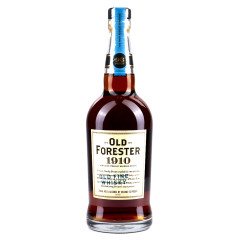A Beginner's Guide to Kentucky Straight Bourbon Part 2: Distilling Process
Our first installment of this series went over a brief history of Kentucky straight bourbon. In part two, we’ll be centering on the distilling process of this iconic American spirit. The distilling process is an essential part of creating bourbon. It involves several steps, each of which plays a critical part in the final product.

The distilling process starts with what is know as a mash bill. This is simply a combination of different grains. But to be bourbon, by law, must contain at least 51% corn. Other grains typically used include rye, wheat, and barley. The grains are ground into a coarse meal and mixed with water to form a mash.
The mash is then heated to release the natural sugars from the grains.
Yeast is added to the mixture, beginning the fermentation process. The yeast consumes the sugars in the mash and produces alcohol and carbon dioxide.
After fermentation, the resulting liquid is known as distiller's beer or mash. The mash is then distilled. It iss heated in a still, which separates the alcohol from the water and other impurities. The resulting liquid, known as "white dog" or "new make”. It is a clear, high-proof spirit that is not yet considered bourbon.

The white dog is then aged in new, charred oak barrels. By law, Kentucky straight bourbon must be aged for a minimum of two years in new American oak barrels. Although numerous bourbons are aged for much longer. During the aging process, the bourbon takes on the flavors and aromas of the oak barrel. The charred layer on the inside of the barrel also filters out impurities and adds color to the bourbon. The barrel can be charred at different levels. Generally the longer the bourbon is aged, the more complex its flavor profile becomes.
After aging, the bourbon is cut with water to bring it to the correct proof before bottling. Kentucky straight whiskey must be bottled at a minimum of 80 proof (40% ABV). At this stage the master distiller selects and blends different barrels together to maintain a consistent flavor profile
It may be evident at this point that the distilling process of bourbon is a complex and intricate process. It involves several steps. Each step, from the mash bill to the aging process, plays a vital role in creating the unique flavors and aromas that are associated with Kentucky straight bourbon. The ingredients, aging, and barrels all play a pivotal role in the production of Kentucky straight bourbon. The mash bill determines the flavor profile of the bourbon. While the aging process adds depth and complexity to the final product. The barrels, meanwhile, contribute a range of flavors. While flavors such as vanilla, caramel, and oak are common every distillery produces unique results.
We would like to offer a few bourbon suggestions for people looking to start exploring the world of bourbon. With a range of flavors and styles, these bourbons are approachable, easy to drink, and available for in-store or online purchase. Whether you are sipping it neat, on the rocks, or in a classic cocktail, these bourbons are an excellent introduction to the rich history and complex flavors of American whiskey.
We have one more blog in this series left! Next time we will crack into tasting bourbon. Including how to taste and what to expect. So stay tuned! Thank you for reading!
-SW






